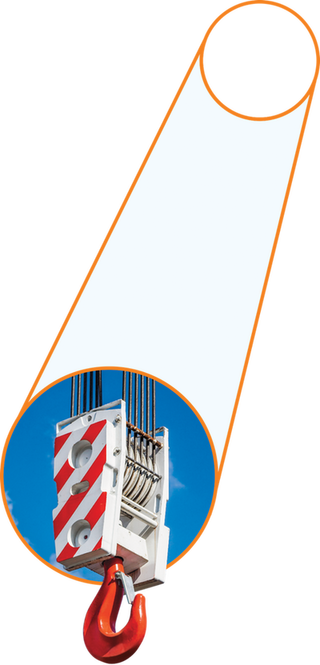Pulleysonthe Move
Thepulleyatthetopofaflagpolestaysinoneplace.It’sattached,orfixed,tothepole,soit’scalledafixedpulley.Fixedpulleysarealsousedtoraisesailsonsomesailboats.Thepulleyisattachedtothetopofthemast.Allasailorhastodotoraisethesailispulldownonthe rope.
Afixedpulleyisfineforliftingsomethingthatdoesn’tweighverymuch,likeabucketwithlunchinsideoraflag.Butwhatiftheloadismuch heavier?Forexample,mechanicssometimeshavetoliftaheavyengineoutofacar.Onepersoncouldneverlift itusingonefixed pulley.
So,what’stheanswer?Morepulleys!Youcanaddasecondpulleybelowthefixedone.Noticethatthissecondpulleyattachestotheload.Thatway,thepulleymoveswiththe load.
Addingthemovablepulleydoessomethingspecial:Itdoublesyourforce!It’slikehavingtwopeoplepullinginsteadofone.Butwhystopthere?Addingathirdpulleymultipliesyourforcebythree.A fourthpulley. . . well,yougetthe idea.
Pulleymultiplicationmayseemlikemagic,butit’ssciencethroughandthrough.Theropesupportstheloadbyloopingbeneaththepulleysthatliftit.Thissupporthelpsthe lifting.


Cranesliketheseusemanypulleystoliftheavy weights.
Count thesegmentsofropeinthediagram.Thenumberofsegmentstellsyouhowmanytimesthatcombinationofpulleysmultipliestheforce.Countonlythesegmentsofropethatloopunderapulley,notthesegmentthatyoupullon.Thesegmentyoupullondoesn’tsupportthe load.
less
distance,
more
force
greater
distance,
less
force
Afixedpulleychangesthedirectionof force.
Asyouaddmorepulleys,youpulltheropeagreaterdistancebutuselessforcetomovethe load.
Mostpulleysareacombinationofmovablepulleysconnectedtooneormorefixedpulleys.Constructionsitesareterrificplacestoseepulleysinaction.Soareloadingdocks,wherecranesliftandlowercargoonandoff ships.
Youcanfindotherexamplesjustaboutanywheresomethingneedstoberaisedandlowered.Thatincludestheblindsinyourhomeorschool.Windowwashersusepulleystoraiseandlowertheirplatformhighabovecitystreets.Andwhatifahikeronamountainisstrandedandneedstoberescuedbyahelicoptercrew?Pulleysliftthehikerto safety.
Pulleysusedtogethermakelifting easy.


Pulleysusedonsailboats are called blocks.
blocks
Trade‑offs
Youknowthatthemorepulleysyouuse,themoretheymultiplyyourforce.Anotherwaytolookatit:Themorepulleysyouuse,thelesseffortyouneedtoliftthesame load.
Imagineusingafixedpulleytoliftaheavyboxofbooksontothebackofatruck.Yougrabagoodholdontheropewithtwohandsandpull.It’sastrain,butfourtugslaterthebox isonthe truck.
Forthenextboxofbooks,youaddamovablepulleyconnectedtothebox.Yourforceisdoubled,whichmeansyoupulltheropewithonlyhalftheeffort.It’saloteasierbutyouhavetogiveeighttugsontherope.Doyouseethe pattern?
Eachtimeyouaddapulley,yousaveoneffortbutyouincreasethedistanceyouhavetopulltherope.That’sthethingaboutsimplemachines:Therearealwaystrade‑offs.Themorepulleysyouuse,theeasieritistopulltherope,butthefartheryouhavetopullit.Youtradedistanceforeffort.Youalsosaveyourselffromgettingasoreback,soit’sagood trade!
block
